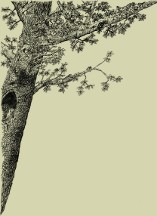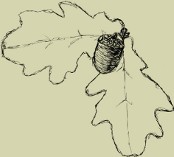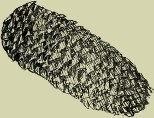42 41 40 39 38 37 36 35 34 33 32 31 30 29 28 27 26 25 24 23 22 21 20 19 18 17 16 15 14 13 12 11 10 9 8 7 6 5 4 3 2 1
Zeszyt 22 (1991)
On the occasion of 65 birth anniversary there was presented scientific activity of Professor Dr. Walter Liese, eminent international specialist in the range of anatomy, pathology and protection of wood, member of numerous international scientific organisations, Professor of Hamburg University. The main range of scientific interest of Professor W. Liese is wood anatomy, with particular devotion to the cell wall ultrastructure, bark anatomy, dendrochronology, micromorphology of wood decay, physiology of wood destroying fungi and bacteria, oak decline. Professor Dr. W. Liese is the laureate of numerous distinguishings and awards, he is doctor honoris causa of Forest Universities of Sopron, Zvolen and Constantinople. Due to this cooperation in the range of international scientific activity, in that with Wood Technology Faculty of Poznań Agricultural University (Poland), High Senate of this University awarded him the title of doctor honoris causa on October 4 1991.
Wood of Scots pine (Pinus sylvestris L.) trees from stands exposed on the sulphuric acid, phosphoric and fluorine compounds were investigated under special consideration to physical and mechanical properties. Age of samples trees was under 60 years (55 years) and they were exposed into emissions during last 40 years. It was revealed that such young trees, despite of damage to their foliage have had affected wood properties. Decrease was in mechanical properties (static bending, modulus of elasticity at bending and other) about 10-15% in comparison with control wood of the some, and stand quality class. Method of investigation of considerably young trees proved satisfactory.
Main properties of heartwood with pathologically differentiated colour (e.g. of oak heartwood with included sapwood) were compared to the same properties of heartwood with inborn alternating dark and fair longitudinal strips. This last texture is highly appreciated in decorative veneers, for instance in these from Zebrano species (Microberlinia sp.). It has been found that — irrespective of the reason of colour differentiation — fair coloured wood parts show the density from 3.8 to 22.2% lower and hardness from 4.4 to 27.1% lower than the dark coloured parts of the same heartwood. To the contrary, the dynamic properties — the impact bending strength and the ultrasound velocity along and across the fibres — are not affected by the difference in colour nor by the density of the heartwood in question.
Preliminary studies on the application of solid waste from the hydrolysis of Tunisian olive stones to the preparation of granular carbon adsorbent were carried out. Thus obtained semi-coke was activated by a physico-chemical method. In the carbon-derivatives the capillary structure and some adsorption properties were determined. It was observed that the obtained active carbons are characterized by high absorptivity of iodine from the liquid phase.
The spruce wood and unbleached cardboard (Picea abies (L.) Karst.) were subject to the action of Coniophora puteana (Schum. ex Fr.) Karst. fungus during 7, 14, 21 and 28-day periods. Changes in weight and contents of cellulose, lignin, pentosanes and weak alkali soluble substances were determined as well as their reactivity with alkalis as compared to indecomposed materials. It was found that basic chemical composition and dynamics of decomposition of solid spruce wood and cardboard obtained form that material are comparable.
The application of computer method for estimation of fungitoxic value of wood preservatives was investigated in classical agar-block experiment. WR-3 preservatives (quaternary ammonium compound + borates) were used against test fungus Coniophora puteana. With the aid of computer programme based on the least square method the regression equation was calculated between sample mass loss both in terms of percentage and following probit and decimal and natural logarithmic transformations — and preservative retention both in percent and after decimal logarithmic transformation. It seems that probit transformation is most suitable to computer estimation of fungitoxic vale of wood preservatives.
The investigations were carried out on the penetration of boric compounds (H3BO3, Na2B4O7) into sap- and heartwood of pine. Depth of penetration, quantity of salt, distribution of boron at the depth of its penetration and exact of curcumin method were determined.
The aim of this work was to prove the usability of the criterion of he minimum surface tension on the interface between wood and lacquer coatings and the criterion of identity of the polar part of the surface free energy of the boundary layers to determine the work of adhesion. The polar and dispersion forces were determined by measuring the contact angle of sessile droplets of distilled water on the investigated surfaces. The adhesion work was calculated for groundcoat lacquers: nonsaturated polyster, acrylic waterborne, nitrocellulose and for topcoat lacquers: polyurethan, cellulose-urethane, chemosetting.
It was observed that the work of adhesion has greater value when the interfacial tension between wood and ground coat is lower and when the polar part of the surface free energy of wood and ground coat lacquer are close to 1.0.
Axial desorption shrinkage of needles dehydrated at 25°C to different equilibrium moisture content was studied. The relation between equilibrium moisture content and degree of lengthwise shrinkage of needles is curvilinear. The degree of desorption shrinkage of pine needles is considerably higher than the corresponding one for mature wood but it is comparable to the degree of lengthwise shrinkage of juvenile wood.
Longitudinal desorption shrinkage of needles from ten pine species was studied. The study indicated considerable differentiation of longitudinal shrinkage of needles from 0.6 to 2.7% while the needles of 5-needle species are characterized by significantly higher shrinkage than the 3- and 2-needle ones. The magnitude of needle shrinkage is comparable to that in juvenile wood and phloem, while it is greater in comparison to normal mature wood.
The effect of ozone dose on the integrated intensity of 1780-1700 cm−1, 1526.5-1492.0 cm−1 and 830.0-790.0 cm−1 bands in FT-IR spectrum (taken relatively to internal standard peak, related to CH2 stretching vibration, 3007-2750 cm−1) of sulphate pine pulp (Kappa No. 24, brightness 30.0%) treated with ozone (1, 2, 3, 4, 5% O3 in relation to fibres) was investigated.
The position of gravity center of bands and the dispersion were also investigated. Basing on the comparison of changes in the intensity of mentioned bands (biggest changes in the intensity of 1780-1700 cm−1 and 1526.5-1492.0 cm−1 bands, little changes in the intensity of 830.0-790.0 cm−1 band) it was concluded that the mechanism of pulp ozonization changes twice: at 2 and 4% of ozone dose. Some elements of the reaction mechanism were proposed.
The relationships between the integrated intensity of 1780-1700 cm−1, 1526.5-1492.0 cm−1 and 830.0-790.0 cm−1 bands in FT-IR spectrum, brightness and lignin content for sulphate pine pulp (Kappa No. 24, brightness 30.0%) treated with ozone (ozone dose: 1, 2, 3, 4, 5% O3 in relation to fibres) were investigated. Although only little changes in the intensity of 830.0-790.0 cm−1 band were found, just these changes appeared most valuable. They showed the existence of two turning points in the mechanism of ozonization. The reasons of brightness changes connected to elements of the reaction mechanism were suggested.
Some properties of kraft-lignin (KL) and organosolv lignin (OS) were compared. The main differences were determined in the yield of vanilin. For OS-lignin this value was approximately three times higher than for KL. OS-lignin was also more reactive in condensation reaction with formaldehyde than KL. The determination of molecular weight (according to gel-filtration), thermodilatometric measurements and special studies of lignins proceed to get some more information about structures and properties of these samples.















 Pobierz PDF
Pobierz PDF